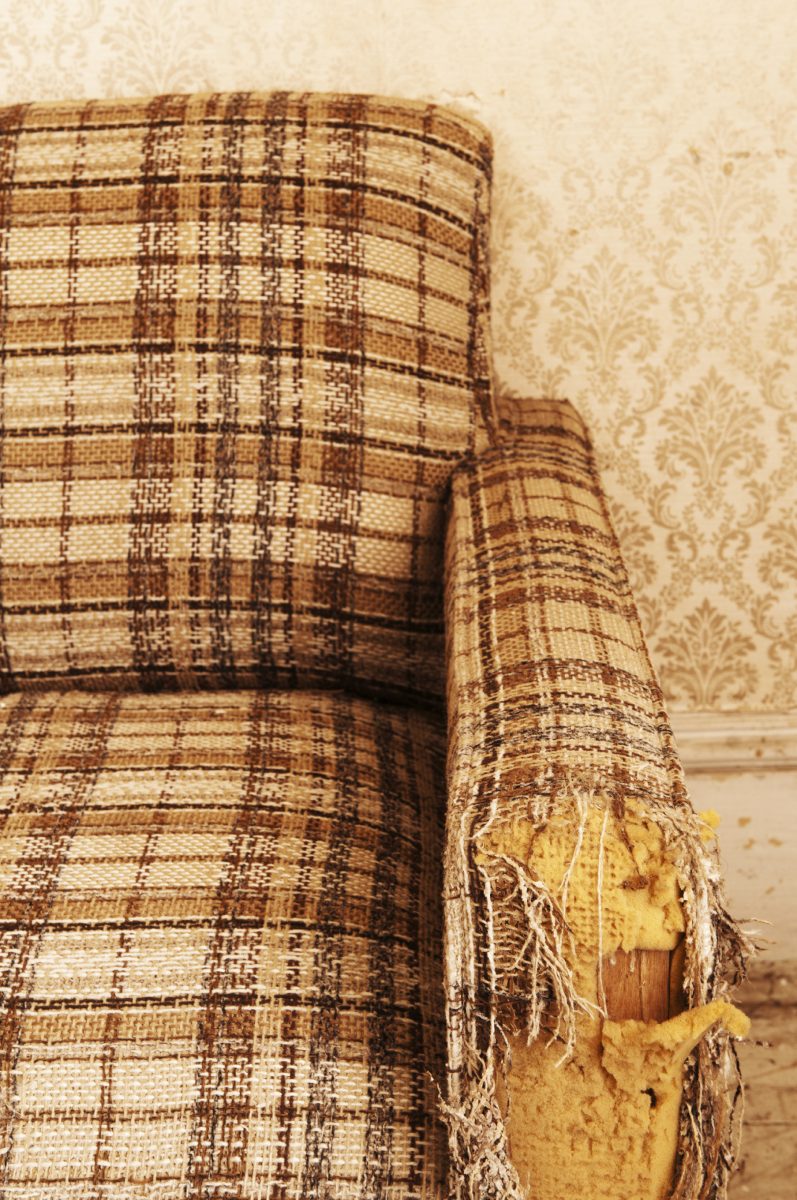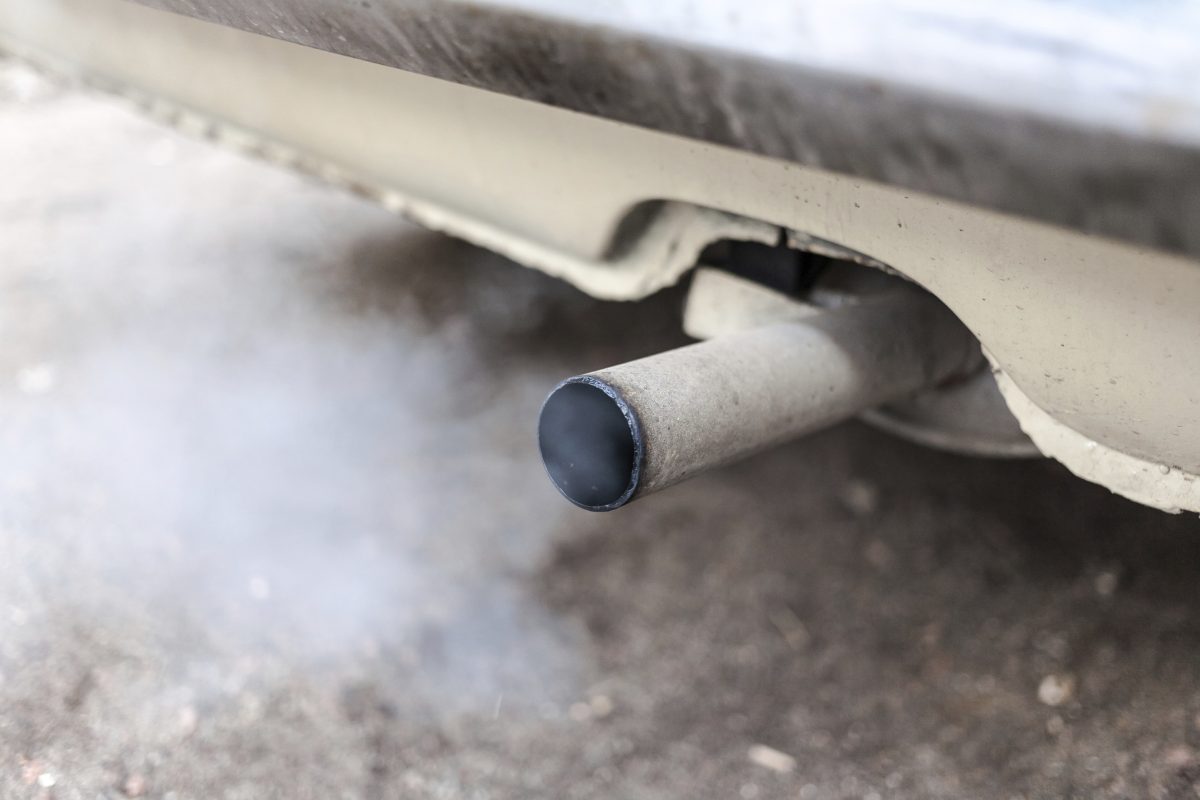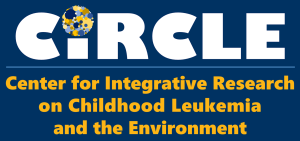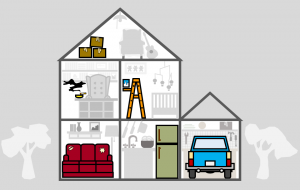

We spend our lives surrounded by dust. It’s there – hiding under the sofa, trapped behind the closet door, sitting in the corner. And more of it piles up each day. For most of us, dust is just a minor nuisance, but it has the potential to be a real health hazard.
CIRCLE investigators, Dr. Catherine Metayer, Dr. Steve Rappaport, and Dr. Todd Whitehead, in collaboration with Dr. Mary Ward and her colleagues at the National Cancer Institute, have demonstrated that the risk of childhood leukemia is linked to levels of several residential pollutants measured in settled dust, including concentrations of polychlorinated biphenyls, polybrominated diphenyl ethers (flame retardants), and polycyclic aromatic hydrocarbons. These chemicals are commonly found in homes because they come from consumer products like furniture foam, electronics, and cigarettes. CIRCLE and NCI investigators have measured levels of chemicals in dust samples collected from the homes of participants in the California Childhood Leukemia Study and found that children who have leukemia tend to have higher levels of these pollutants in their homes than healthy control children.


PBDEs are flame retardants that were used to treat foam inside upholstered furniture.
Polybrominated Diphenyl Ethers (PBDEs) and Childhood Leukemia
Dr. Ward and her CIRCLE colleagues evaluated the risk of childhood leukemia associated with PBDEs using the California Childhood Leukemia Study population. The investigators studied 167 acute lymphoblastic leukemia patients 0-7 years of age and 214 healthy control children matched on date of birth, sex, and race/ethnicity. Concentrations of 14 PBDEs were measured in settled dust collected from study homes as indicators of total exposure to these chemicals. Comparing the top-third most contaminated homes to those with undetectable levels of contamination, the investigators observed an increased risk of acute lymphoblastic leukemia for four of the chemicals analyzed. The study found no association with childhood leukemia for the most abundant PBDEs, but positive associations were observed for specific PBDEs with eight or nine bromine atoms, which are less abundant in the environment. The full article is available on our publication page.
Polybrominated diphenyl ethers are flame retardants that were used indiscriminately in California for many years in consumer goods such as the polyurethane foam found inside pieces of upholstered furniture. Interestingly, CIRCLE investigators observed that these toxic chemicals were more abundant in the dust from homes where furniture had crumbling or exposed foam. Children and mothers who were living in homes with this type of damaged furniture were also found to have elevated levels of polybrominated diphenyl ethers in their blood (read more about these findings here). These findings suggested a mechanism of transfer from consumer items to the indoor environment via weathering or abrasion, which was subsequently confirmed using microscopic analysis of individual dust particles from the carpets of these homes. This research illuminated a causal chain from consumer goods treated with chemical flame retardants, to indoor chemical contamination, to human exposure, and, ultimately, to an increased risk of cancer. You can read more about these findings on our publication page.
Polychlorinated Biphenyls (PCBs) and Childhood Leukemia
Similarly, Dr. Ward and Dr. Metayer evaluated the risk of childhood leukemia associated with exposure to six PCBs and six organochlorine pesticides in the California Childhood Leukemia Study population. The study included 184 acute lymphoblastic leukemia patients 0–7 years of age and 212 healthy control children matched to cases by birth date, sex, race, and Hispanic ethnicity. The investigators used concentrations of these persistent chemicals in settled dust as indicators of total PCB exposure. Detection of any PCB in the dust conferred a 2-fold increased risk of acute lymphoblastic leukemia. Compared with those in the bottom-quarter of total PCB exposure, the top-quarter was associated with about a 3-fold risk of leukemia. Like PBDEs, PCBs were also found in the blood of children and mothers living in homes with contaminated dust. This study suggested that polychlorinated biphenyls represent a previously unrecognized risk factor for childhood leukemia. The full article is available on our publication page.


PCBs were used extensively in electrical, heat transfer, and hydraulic equipment, including in transformers and capacitors.
Polycyclic Aromatic Hydrocarbons (PAHs) and Childhood Leukemia
Dr. Nicole Deziel and her CIRCLE colleagues evaluated the risk of childhood leukemia associated with PAHs using the California Childhood Leukemia Study population. The study included 251 children with acute lymphoblastic leukemia and 306 healthy control children. Concentrations of nine PAHs were measured in settled dust collected from study homes as indicators of total exposure to these chemicals. Dust was collected using a high volume small surface sampler (N=185 cases, 212 controls) or by sampling from participants’ household vacuum cleaners (N=66 cases, 94 controls). Among participants with dust collected via the high-volume small surface sampler, risk of acute lymphoblastic leukemia was not associated with increasing concentration of any PAH. However, among participants with vacuum dust, we observed positive associations between acute lymphoblastic leukemia risk and increasing concentrations of benzo[a]pyrene, dibenzo[a,h]anthracene, benzo[k]fluoranthene, and indeno[1,2,3-cd]pyrene. The increased leukemia risk among participants with vacuum dust suggests that PAH exposure may increase the risk of childhood leukemia. The full article is available on our publication page.


PAHs are generated as a byproduct of incomplete combustion and have many sources, including automobile exhaust.
What can you do to protect your family?
We are conducting intervention studies to evaluate strategies for removing chemical contamination from homes and for avoiding exposure to chemicals in settled dust. Simple strategies include: cleaning with a HEPA-filtered vacuum and wet wiping to limit dust, removing chemical sources (for example: by banning cigarette smoking, by repairing or replacing damaged furniture, or by taking shoes off at the front door), and frequent hand washing (especially prior to meals). You can learn more tips for keeping a healthy home in our short film: Dirty Little Secrets about House Dust.


